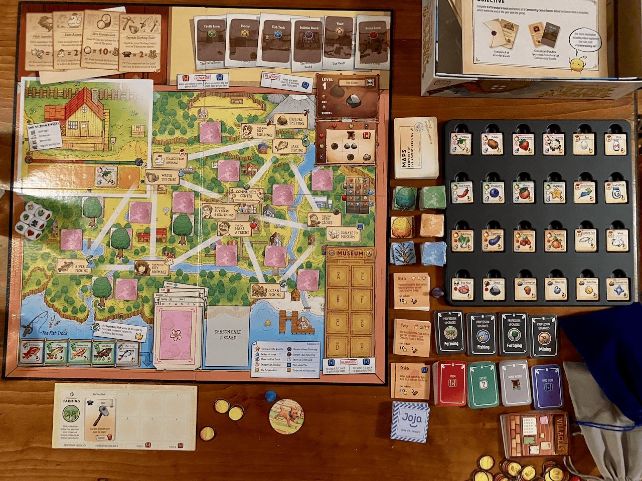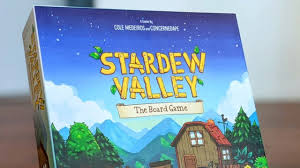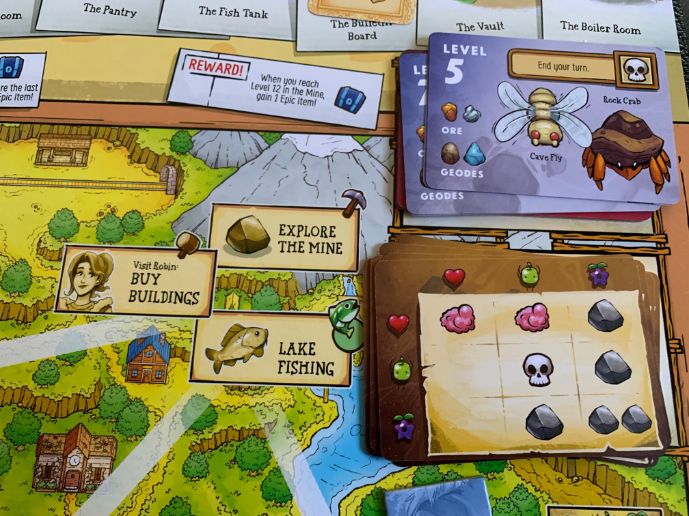Since its debut on various platforms in 2016, the farming and socializing simulator Stardew Valley has amassed over 20 million downloads.
You’ll need to farm, fish, make friends, and find a variety of other resources to accomplish Grandpa’s goals and restore the Community Center in order to do this. Explore the Mine and collect a variety of items and animals.
As the seasons change, acquire strong upgrades and skills. We’ll give you a tour of Stardew Valley in this article. Please keep reading.
Description Of Stardew Valley
Based on Eric Barone’s Stardew Valley video game, a cooperative board game about farming and friendship. Join forces with your fellow farmers to defend the Valley against the evil JojaMart Corporation!
To accomplish your grandfather’s goals and restore the community center, you’ll need to farm, fish, make friends, and find a variety of other resources. Explore the Mine, raise animals, and collect a wide variety of items.
As the seasons change, test your ability to preserve Stardew Valley’s magic by acquiring strong upgrades and skills.
Grandpa’s Goals and Community Centre restoration are the game’s objectives, and achieving them requires you to collect various resources, which are represented by tiles. You have a predetermined number of turns to complete this.
The Season Deck, which consists of 20 cards, serves as the driving force behind this. One card is drawn each turn to cause specific events. The players decide collectively where they will concentrate their individual actions each turn, and they then place their pawn in that area of the Valley.

Through their actions, they travel to particular places in an effort to collect materials to achieve their shared objectives. These are examples of actions: watering crops, trying to catch fish rolling dice to explore the mines, and many more. The game is over when the Season Deck is depleted.
What’s In The Box?
The rulebook, which is located at the top of the box and has a nice welcome letter on the cover reminiscent of the game’s beginning, is there. Punch-out cardboard tiles are stacked one on top of the other.
There are tiles for fish, minerals, crops, scavenging, and even tiles for ancient artifacts. Due to the sheer number of tiles, the game even comes with a special tray to sort and store any tiles that don’t belong in the provided draw bags.
The contents are completed by a fold-out board with a Stardew Valley map and numerous bookkeeping spaces, as well as a few decks of cards, dice, and pawns. Rather than using standees or miniatures, the game uses standard gaming pawns, and the dice are printed specifically for it.
Everything is drawn in an entertaining cartoon style that closely resembles the original game without becoming pixelated. It gives the game a strong sense of identity while also clearly distinguishing it from other video games in the genre.
Even without the benefit of miniatures, the entire setup looks fantastic on the table.
How To Play Stardew Valley?
You might be surprised to learn that Stardew Valley: The Beginning offers a smooth, tutorial-based introduction. The Board Game is a tad challenging. Two decks of objectives will be dealt out at the beginning of the game.
Grandpa’s Goals is one such game that offers a variety of challenging high-level objectives, such as having each player complete the game with three friends or delving all the way to the mine’s base.
What is required to fix the community center’s rooms is determined by the other deck. These are resource-based, begin face-down, and call for large amounts of things like gold, fish, or minerals.
In order to succeed, your playgroup will have to work together to reveal and complete them all.
A season card that either depicts a festival or a series of pre-turn effects is dealt with at the beginning of each turn. These effects can range from rainwater in your fields to having the evil Joja Corp slap charges onto board locations.

There is a lot of variety here, including extra sub-event decks for more information, and it really helps keep players on their toes and engaged with what would otherwise be a tedious stage of bookkeeping.
You select a location on the board, perform two relevant actions there, or perform one action, move to an adjacent location to perform a second action there, and scavenge along the way.
Purchasing seeds from Pierre’s General Store in the center of town, planting them, and then going to the fields to water and possibly harvest them are examples of location actions.
You can eventually explore the mine, buy structures and animals for your farm, fish in various locations, and donate items to the museum.
The majority of the time, actions let you acquire or trade resources you can use to work toward the game’s objectives. And if it’s your first time playing, you might be in for a surprise.
The board game Stardew Valley is quite demanding, in contrast to the video game’s reputation as a relaxing pastime. You must reveal some of your goals before creating a strategy to achieve others because you need to keep some of them a secret.
It’s also very possible to lose if you don’t plan well.
Stardew Valley is a good game to play if you want a more laid-back session. With some less difficult difficulty sessions, the Board Game has you covered. The good news is that this is great from the perspective of the typical cooperative board game.
It encourages teams to collaborate and find original solutions to issues by rewarding repeat plays that help players understand the subtleties of the strategy.
This process is never simple because of the diverse goals, and it never becomes automatic because of the random card shuffling and dice-rolling.
However, some of the objectives are hampered by those random effects. Reaching the bottom of the mine and exploring there is one of Grandpa’s goals, and the process can be very unpredictable and involve a combination of dice rolls and card draws.
Another objective needs catching legendary fish, which are extremely difficult to find and depend on luck to be pulled out of the fish tile bag.
Additionally, the game has a tendency to lose steam as it draws to a close. The key elements of the appeal here are setting goals, coming up with a plan to achieve them, and then watching it all come together as your farm expands and thrives.
Other than the anticipation of drawing a tile, the game’s actual turns can be a little mechanical and get boring as it progresses. A few turns before you reach the end, it will frequently be obvious whether you will win or lose.
Where To Buy Stardew Valley?
- Get it at Amazon
- Get it at Stardew Valley Shop
